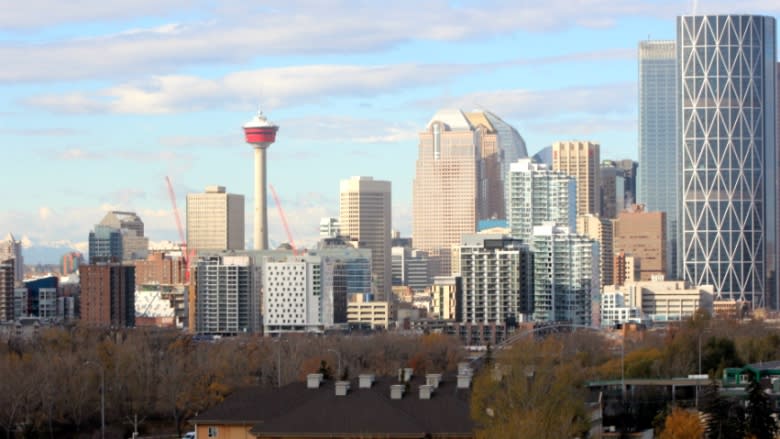Calgary grows by 11,166 people due mainly to more babies, says census
Slightly more people moved into Calgary than left in the past year after a period of thousands leaving, according to city census results released Thursday.
The 974 resident gain from net migration is in contrast to 2016, when Calgary saw a negative net migration — losing about 6,500 residents.
The city currently has a population of 1,246,337 — an increase over the past year of 0.90 per cent, or 11,166 people.
The city says that's mostly due to Calgarians having more than enough babies to balance out deaths.
Calgary's annual census covers the time period between April 2016 and April 2017, and is meant to collect data to inform municipal policy decisions and applications for grants, which are often secured on a per capita basis. This year's had a response rate of 98.1 per cent, the city said.
The population totals in the majority of the city's communities stayed stagnant last year, with growth in parts of downtown and in the outskirts.
The slight growth — by less than 1,000 people across the city — is a signal Calgary may need to plan for slower population growth, University of Calgary planning professor Sasha Tsenkova told CBC News on Thursday. Calgary used to gain people in large numbers, like the more than 36,000 people between in 2012 and 2013.
"[Now] it's not the arrival of new people coming to the city because of jobs," she said. "This new pattern requires a different strategy, so people can live in neighbourhoods and stay."
Shrinking neighbourhoods
Some Calgary neighbourhoods have lost a handful people in the past year, like the northeast community of Falconridge, which is down 529, and the southeast area of Dover, down 444.
Other communities lost big numbers compared to their populations. Eau Claire, a community of mostly highrises on the north edge of downtown, along the Bow River, lost 11.5 per cent of its residents.
Fastest growing areas
The Beltine, another downtown Calgary community, gained among the most residents of all Calgary communities. The area added more than 1,200 residents, a jump of almost five per cent from 2016. Over the past five years, the Beltine's population has gone up by 15 per cent.
In a press conference Thursday morning, Calgary Mayor Naheed Nenshi said the city must grow in sustainable ways so it can keep up with infrastructure. The goal, he said, is to build density in the core and existing neighbourhoods, where services like transit and schools can be expanded instead of built from scratch.
"For a long time, so much of our infrastructure has focused on the outskirts of the city, making it easier to live there and making it harder to live in established neighbourhoods," Nenshi said.
"I think we have a much better balance now."
'Not healthy or sustainable'
Right now, Calgary's fastest growing community is a newer suburb in the far southeast, called Auburn Bay. It gained 1,870 residents in a year. Over the past five years, the community has almost doubled in size.
Most of the population jumps are on the edges of the city in newly built subdivisions, such as Cityscape, Nolan Hill, Skyview Ranch, Redstone and Evanston in the north, and Legacy and Mahogany in the south.
Tsenkova says the slower growth of the city does suggest council should look to putting more people in established neighbourhoods, rather than building new ones on the outskirts.
"Otherwise we'll hollow the city out, and that's not healthy or sustainable," the planning professor said.
Vacancy rate at 4.76
The civic census shows new construction and renovations of housing continues to rise, as well, by 1.44 per cent in the past year.
Meanwhile, 25,553 housing units are sitting empty, as the vacancy rate has risen from 4.3 per cent last year to 4.76 in this latest census.
Anything exceeding five per cent in the housing market is "extremely alarming," Tsenkova said.
"That's a very clear message" that the city needs to address density, she said.
"The downtown is a very important driver of the economy and defines the identity of the city."
Nenshi told reporters he's "not fussed" about the current vacancy rate, but that the city is aiming for a sustainable lower one.
Full results of the City of Calgary survey are available online.



